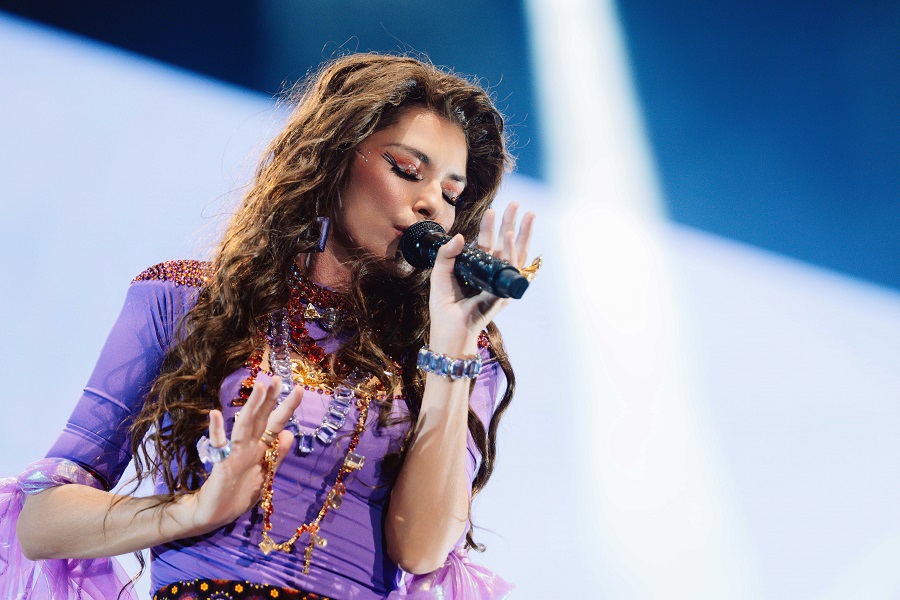Ahmed Mater

‘Illumination X-Ray’
The latest Middle Eastern & Contemporary Art sale from the storied auction house Christie’s features works by 12 Saudi artists — highlighted in a “Saudi Now” section on the auction site, which Christie’s describes as “a carefully selected group of works by Saudi artists that trace the unique history of the Kingdom’s artistic evolution; from the development of a modernist language deeply enmeshed in the country’s cultural heritage, to innovative contemporary works that challenge perceptions of what Saudi art is and can be.”
Mater, a qualified doctor, is perhaps the most famous of the artists contributing to the latter group. His work, Nour Kelani — Christie’s managing director, Saudi Arabia — wrote in an email to Arab News, “explores history and the narratives and aesthetics of Islamic culture, and continues to receive much-deserved growing regional and international acclaim.”
The ‘Illumination’ series to which this diptych belongs, she continues “brings together traditional Islamic art and modern medicine — two subjects that are often treated as essentially separate and full of tense contradictions.”
Abdulhalim Radwi

‘Peace’
Kelani says Radwi is “one of Saudi Arabia’s most respected Modernist artists.” Indeed, he is often considered the ‘father’ of modern Saudi art. He was one of the first Saudi artists to study overseas, earning his BA in Rome in the Sixties and living for a time in Madrid in the Seventies. His work, Kelani notes, “draws references to Saudi Arabia’s desert life, folklore and traditional architecture” and although Radwi was born in Makkah, he is most strongly associated with Jeddah, where he spent much of his adult life.
This piece is one of Radwi’s later works, created in 2002, just four years before he died. It is expected to fetch between $20-30,000 at auction.
Faisal Samra

‘Performance #13’
The Saudi-Bahraini artist is “considered a pioneer of conceptual art in the Middle East,” says Kelani. “He incorporates digital photography and performance into a creative repertoire of work.” This piece comes from his “Distorted Reality” series, which features covered individuals in blurred motion. “I don’t like still water; I like it to be moving,” Samra told Arab News last year. “I’m exploring to find something different. The core of my research is man’s existence in our world, and how we react to it, and how the world reacts to him.”
Jowhara AlSaud

‘He Said, She Said’
The Saudi-born artist “manipulates her photographs with drawing and etching in a process that explores both the impressionability of her medium and the cultural landscape around her, exploring … censorship,” Kelani explains. This work, created in 2009, is a prime example — the lack of facial features and the blurred lines are all conscious depictions of acts of self-censorship on the part of the artist.
Ayman Yossri Daydban

‘Kunna Jameean Ekhwa’
Daydban is a Saudi-Palestinian artist whose work, says Kelani, “is both biographical and a commentary on the environment he grew up in.” This piece, described by Kelani as “iconic,” is from “Subtitles,” a series in which he selects stills from subtitled movies so the text — now decontextualized — is open to our own interpretations. Here, the text reads “We were brothers once.”
Moath Alofi

‘The Last Tashahud’
This work is one of a series of images in Alofi’s series of photographs that, according to Alofi’s website, “captures desolated mosques scattered along the winding roads leading to the holy city of Madinah.” These mosques, the text continues, were “built by philanthropists hoping to offer a haven for travelers, both of whom seek to reap the sacramental rewards of these structures.”
Nasser Al-Salem

‘God is Alive, He Shall Not Die’
Al-Salem, Kelani says, “is a contemporary calligrapher whose work redefines Arabic calligraphy, challenging the boundaries of the traditional Islamic art by recontextualizing it in unconventional mixed-media forms.” Forms such as this one, for example, in which the word “Allah” is presented in neon above a mirror, thus repeating.


























